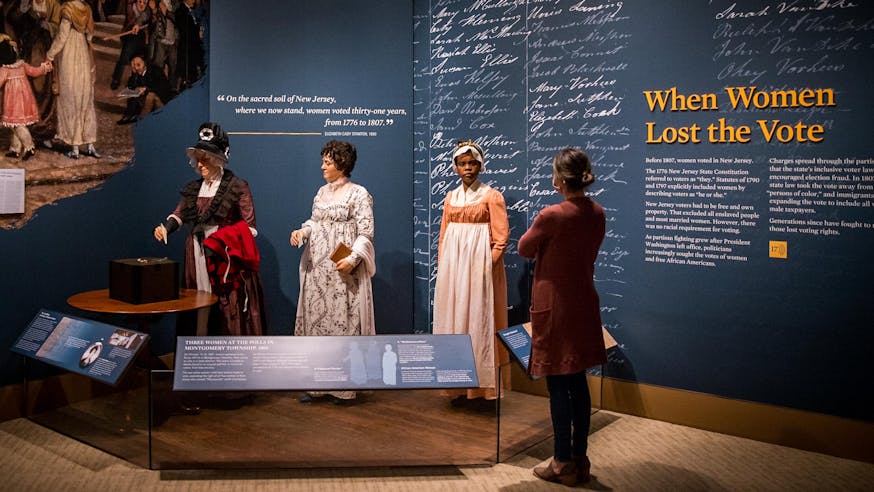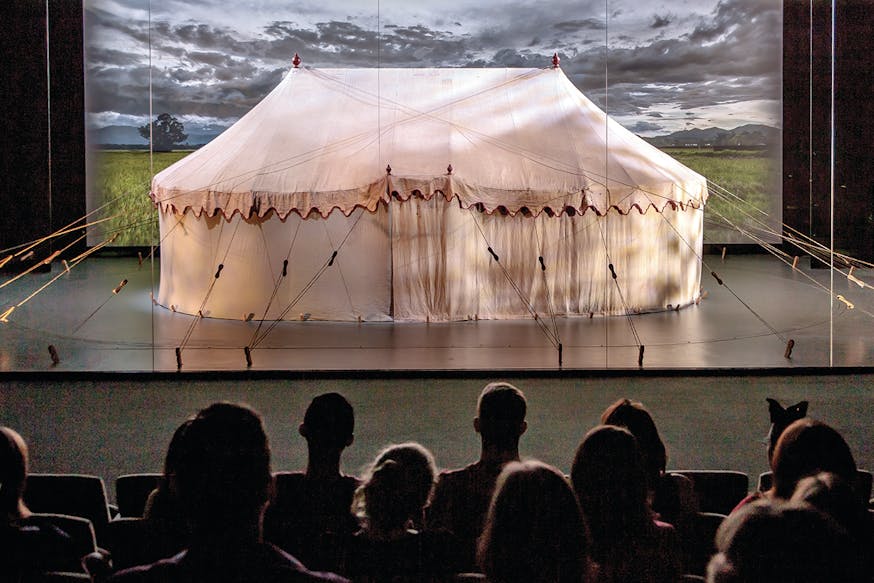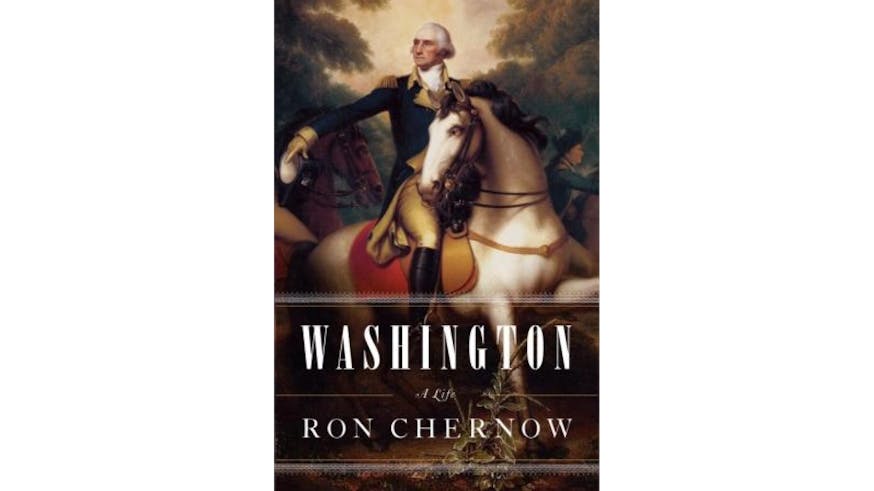Read the Revolution
The Widow Washington
March 23, 2022
Purchase the book from Macmillan Publishers.
Who was Mary Ball Washington? Biographer Martha Saxton explains that George Washington’s mother has received a bad rap from historians over the centuries, with previous portrayals as a bad mother, a “whining shrew,” or simply someone who is not worth a historical investigation. Despite her famous son, Mary left few primary sources behind – no diary and only a few letters. Yet, as Saxton deftly shows, delving into her life offers new insight not only on the family life and formative years of George himself but also about the generation of Virginia women that Mary represents.
In The Widow Washington: The Life of Mary Washington, Saxton plunges us into the world of early 1700s Virginia, with a particular eye on the experiences of women. Knitting together family history, local history and economic history (among other topics), Saxton contextualizes Mary’s life from her childhood years as an orphan through her marriage and widowhood to her struggles as an elderly woman during the Revolutionary War. As Saxton explains, she has “tried…to give her the dignity of independent existence,” and by doing so demonstrates the value of centering women’s experiences, while also building up the reliable information about one woman’s life.
Read about Mary Ball Washington’s tumultuous early childhood, during which she lost her father, her stepfather, and her mother before the age of 12. This excerpt explores the economic, social, and emotional effects of this loss on Mary. Then, continue to read from Chapter 15: The Revolution: A Family Affair, about how her life had changed by age 65, as news of growing tension with the British was received in Fredericksburg, Virginia, and the idea of war became more real in 1774.
Excerpt 1
Mary [Johnson Ball] Hughes took advantage of the relative fluidity that death had forced on Virginia. But even as she appeared in courts, witnessing, suing, and being sued, the public spaces she inhabited were closing their doors on women. Little Mary’s mother had fought her way up in Virginia and put her children in a position to surpass her socially and economically, while it was becoming more and more unusual for women to use the tools that Mary Johnson Ball Hughes had struggled to acquire.
[...]
At about five years old, Mary began girlhood without the oversight of a man in the household. She witnessed her mother’s independence, a woman choosing her own activities, litigating, and directing the education and tending to the physical and material interests of her children. This was simply how things were to Mary, who would have had, as yet, little sense that their household arrangements were unusual. Mary, being young and female, owed some deference to her older half brother John Johnson, but he, too, was dependent on their mother and did not have a patriarch’s weight in the household. Demanding and expecting obedience and having exacting standards for work characterized her own later life as a mother and slave owner. She learned these things at her mother’s knee, observing her strong and open exercise of authority at home.
Mary’s early youth would have been usually free. White southern girls in this period had much the same physical freedom as boys. They were encouraged to play outdoors, to enjoy the hours of light. Mary became a good dancer and a good horseback rider, learning on her mother’s Dragon and Rush. She was a strong and healthy girl.
[...]
Mary, now about eleven or twelve, was old enough to help tend her brother and her mother during the long and unhappy fall and winter of 1720-1721. She had help from her sister, Elizabeth, and could also rely on the enslaved Abba and Winney and possibly others. Visitors first grouped around John and then the ailing widow Hughes: the Eskridges, Bonam relative, perhaps some Balls, and other friends from Lancaster and Northumberland. The mood at home would have been somber and anxious as John and Mary suffered, and young, worried Mary and Elizabeth tried to keep them comfortable. Abba, Winney, Dinah, Tony, Joe, Jack, and Tom would have been worried as well, because death probably meant sale or other dismaying changes that would disrupt whatever equilibrium they had managed to establish in their time at Cherry Point.
As Mary Hughes was dying, she told her young daughter that she was going to leave her “a young mare and her Increase.” The girl must have received this promise torn between excitement at the prospect and terrible dread about the circumstances that were bringing it to her. Young Mary had only her newlywed sister to help her through this grievous time, and Elizabeth was distracted by her own gried and the demands on her of her own husband and new household [...] Mary Hughes made some special bequests to her younger daughter, including the rich bed furnishings that her husband Joseph Ball had left her, most of her clothing, two gold rings, linens, kitchen utensils, and the “good paceing horse.” Mary also instructed Eskridge to buy her daughter a plush silk sidesaddle. She confirmed her promise to give Mary a mare and whatever foals she produced [...]
Mary [Johnson Ball] Hughes specified that her estate spend twelve pounds securing her daughter's land, knowing that now that Mary was doubly orphaned she would be extremely vulnerable to men's claims against her Ball inheritance. As an extra protection, she put Mary "under the Tutelidge and governorship of Captain George Eskridge, during her minority," describing him as her "trust [sic] and well beloved Friend." Everything else she owned she passed on to Mary.
The property arrangements unfolded as both wills were probated in July 1721, and Joseph Ball II continued to litigate with the estate of Mary Hughes over his father's properties." Over that spring and summer, the new shocks settled in on Mary.
When Mary's mother died, she abruptly ended the girl's years as the focus of her care – or of anyone's. Entering adolescence, Mary had lost a father, a stepfather, a half brother, and a mother. The historians Anita and Darrett Rutman observed that such losses as hers were at the extreme end of the scale measuring "the mass trauma and disruption of childhood" that then hung over life in the Chesapeake. Trauma was Mary's normality. The fact that many shared these trials did not lessen Mary's pain or grief or relieve her in the coming years of the limited security and comfort she suffered as a girl.
[...]
Apart from being attempts to ward off the blunt trauma of death, these arrangements and rearrangements reflected the struggles for consolidation and preeminence among families that began in the late seventeenth century and would become more and more pronounced over the decades to come. Mary Johnson Ball had tasted the life close to the top in her years with Joseph Ball. As a mother, she worked tirelessly to protect her children's, but particularly her youngest daughter's possibilities for becoming part of the world she had briefly enjoyed. As a single mother, she labored to enhance little Mary's choices in joining a wealthy clan. Richard Hughes's legacy to his stepchildren resonates with that lonely man's desire to solidify and thank his acquired family at a time when a lew assorted people huddling together gave enhanced meaning to his world. His widow brought her suits and left her legacies knowing that if the remnants of her family would succeed, it would be through the possibilities of a decent dowry for her orphan daughter.
[...]
George Washington often wrote later that imaginary feelings of material want plagued Mary in her older years. But the loss of so many adults in such a short time, including the mother who had been the one constant force in an unstable world, could easily have created powerful feelings of want and of an insufficiency of guidance and protection.
Sign Up
Get biweekly Read the Revolution featured excerpts right to your inbox.
Excerpt 2
Mary enjoyed her comfortably furnished new house, just a brief walk from Betty and Fielding’s house downtown, filled with her grandchildren. It would be even closer to their mansion in progress, Kenmore, completed in 1775. After she moved, George visited a number of times. She also found her way to what became her favorite spot beyond her garden, a rock formation near the Rappahannock on Fielding and Betty's estate, where she enjoyed sitting and reading. She sometimes took her grandchildren with her and read to them from the family Bible and also attend the younger reverend Maury’s services alone or in the company of the Lewises or Charles and Mildred when she liked.
Her slave Stephen, described as elderly, served as coachman and gardener in her stables beyond he garden Mary kept a bay horse for her phaeton, a topless carriage that had a seat in front for the driver, and two seats behind. She also kept two black horses along with her “riding chair.” In her last years, she had a housekeeper, Mrs. Skelton, who executed Mary, desires and oversaw her maid Patty and cook Bet, who had replaced Sue. Stephen and Bet were married and had two children.
In theory, her arrangement with George meant she did not have oversce her land and slaves, but every day when the weather permitted Stephen drove Mary out to the Quarter to check on things. In the summer, she wore a straw hat with a broad brim that she tied with black ribbons. In the winter, she wore her shag cloak alternatively described as red and purple. She acquired a gold-headed cane to help her walk, although she continued to be vigorous for her age and, like her son, enjoyed exercise. She kept up her routine because she knew herself as an independent plantation owner responsible for the stewardship of her property and "family," as planters liked to call their slaves. George was gone. She remained vigilant. And her distrust of overseers had deep roots.
Mary endured most of the uneasy years before the Revolution and the war years in her new house. She had heard George, Fielding, Betty, and others talk about their discontents with Great Britain since at least 1765, when the Stamp Act provoked fierce resistance in Virginia and in the Northern Neck in particular. A meeting of 115 men got together at Leeds Town downstream on the Rappahannock to reject compliance. Charles Washington and Lewis Willis both signed. Fielding was apparently not there, but he would soon be a leader of the resistance to Britain's tax policies. George Mercer, who had served under George at Fort Necessity, had just returned from Great Britain with the job of stamp collector. He arrived in Williamsburg two days before the Stamp Tax was to take effect.
A mob insisted that he resign, which he did the following day. Richard Henry Lee of Westmoreland County, Mary's birthplace, staged a hanging in effigy of Mercer. Virginians began to reevaluate what had been the prestigious and lucrative practice of participating in the imperial bureaucracy. It was at this point that George started reading political pamphlets and began developing the connections between his financial difficulties and deliberate British policy.
Mary never commented – at least in any document that has survived – on the events leading up to the Revolution or on the war itself except as it affected her crops and ability to feed her slaves and herself. Even though she was the mother of the most famous protagonist of the war, Mary suffered food shortages, inflation, fears, and social upheavals like other Virginians. If all politics is local, for Mary politics was also familial. Because she spent so much time with Betty and Fielding Lewis, who were at the center of colony-wide Whig communications, and because Mary worried about her first son, I make the assumption that she had to know in broad outline what the issues were, that she kept some track of local and state politics and had some sense of the progress of the war. She wanted peace, and she wanted her son and eventually her grandchildren home safe. And, although Mary might have preferred to wish a pox on Whigs and Tories alike, it seems inevitable that with George putting his life at stake, Fielding and Betty offering up their fortunes, and the whole family supporting the Revolution, she could not have remained wholly ignorant of or indifferent to the Whig cause. If the matter of taxation remained opaque or of no interest to her, British war tactics, particularly those of Lord Dunmore, encouraging slave rebellion would have pushed her to align with her family. The famous charge by Michel Guillaume Jean de Crèvecoeur, who heard from someone else that she was a Tory, makes no sense. That she did not like military solutions do problems does make sense. Perhaps these observers (who seem to have been French speaking) mistook the latter for the former.
The skirmishes between the burgesses and the British governors became more hostile with the arrival of Lord Dunmore, previously stationed in New York, who kept the representatives sessions as short as possible. In 1773, the burgesses established the permanent colony-wide Commited Corespondence to share information and ideas with other colonies. After the Boston Tea Party in December 1773, and despite troubles between the assembly and the governor; George offered his carriage for Dunmore's use when he arrived, hoping no doubt to demonstrate his own power and respectability and to find some help from the governor in bringing military force to the disturbances between Indians and settlers in the backcountry where George and his friends and relatives had large land claims.
Parliament meanwhile, in March 1774, made the extraordinarily provocative blunder of ordering Boston closed until the Tea Partiers paid for the cargo heaved into the Atlantic. That month, before the news reached Virginia, Charles Washington sponsored a puppet show with considerable punch and bumbo (rum, sugar, water, and nutmeg) at Weedon's Tavern. Perhaps Mary attended.
In May, when the burgesses received the news of the Boston Port Bill, they called for a day of fasting and prayer "to inspire us with firmness in support of our rights. Dunmore dissolved the assembly. A rump group met in a nearby tavern calling for an August meeting of representatives of all the colonies.' George, hoping to enlist Dunmore's power to his advantage in the west, subscribed a pound for a ball to welcome Lady Dunmore while excoriating imperial policy in Boston.
The Reverend James Maury in Fredericksburg held services on June l, 1774, "devoutly to implore the Divine Interposition for averting the heavy Calamity which threatens Destruction to the Civil Rights of America" After his sermon, Fredericksburg men created their local eleven-man Committee of Correspondence, including Fielding Lewis as chairman Charles Dick, and Charles Washington, The Virginia Gazette, reporting on happenings at Fredericksburg, announced, "Credit is due to the Ladies for the Part they took in our Association, and it does Honour to their Sex for no sooner were they made acquainted with the Resolution to prohibit the use of TEA, after the first of June, but before the Day came, they sealed up the Stock which they had on Hand, and vowed never more to use it till the oppressive Act imposing a Duty thereupon should be repealed. May their Example be followed by all the Ladies on this Continent!" Mary bought hyson tea on May 18, 1774. Perhaps she was stocking up, afraid of what was coming down from Massachusetts.
Given that a substantial number in the Virginia Committee of Correspondence and the insurgents in general were either Mary's close kin, neighbors, or lifelong friends, it seems that she probably put away her beloved Bohea and hyson teas – at least in company. Certainly Betty would have joined the boycott. John Harrower, the indentured Scottish tutor at Belvidera, the Daingerfield family plantation, about seven miles down the Rappahannock from Fredericksburg, noted enduring six months without tea. George spent the night at his mother's later in June and made no mention of tea.
Martha Saxton, The Widow Washington: The Life of Mary Washington (New York: Farrar, Straus and Giroux, 2019), 48-51; 225-229.
Read the Revolution is sponsored by The Haverford Trust Company.
Read the Revolution is published biweekly by the Museum of the American Revolution to inspire learning about the history of the American Revolution and its ongoing relevance.
Tags
Learn More

Women's History Month

Washington's War Tents


